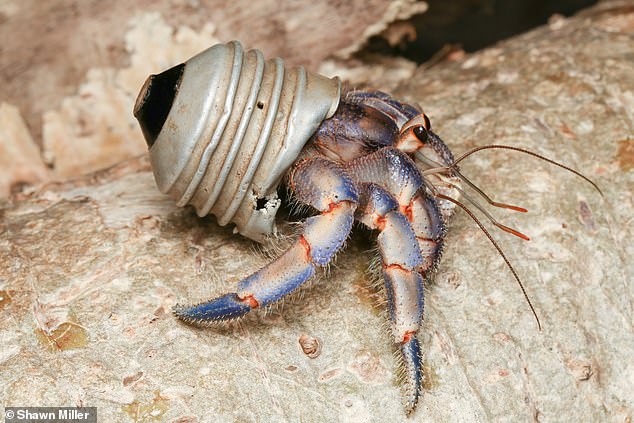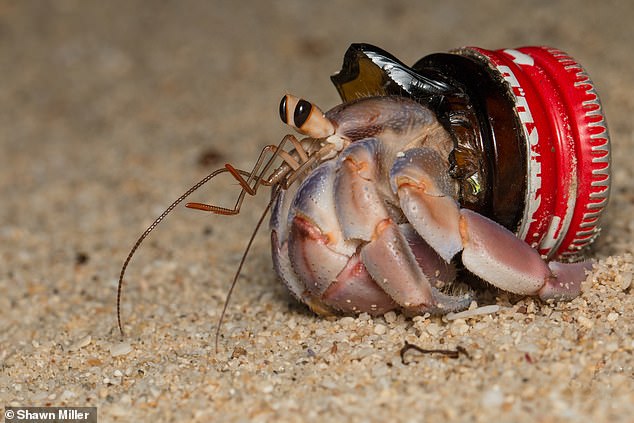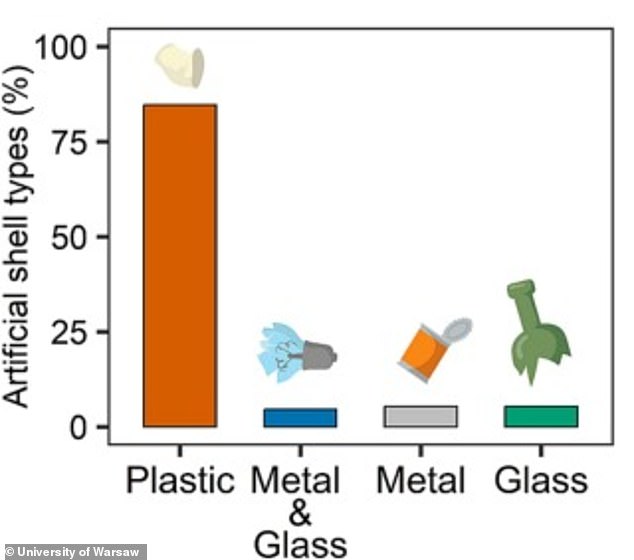The hermit crab forced to live in a toothpaste lid: Heartbreaking images show the devastating effects of Earth’s pollution
- Hermit crabs turn to metal bottle caps and lamp fragments to make themselves at home
- Scientists are heartbroken to see the extent to which animals are living in waste
Every now and then you pick up a beautiful shell on the beach and inside it is a small hermit crab.
But the crustaceans, which collect shells as armor for their bodies, are increasingly turning to plastic waste, photos show.
Startling footage shows hermit crabs, instead of shells, are turning to metal bottle caps and lamp fragments to make themselves at home.
Scientists say they are ‘heartbroken’ to see the extent to which animals are living – literally – in our waste.
Startling footage shows hermit crabs, instead of shells, are turning to metal bottle caps and bulb fragments to call home

Experts from the University of Warsaw analyzed online photos taken by nature lovers and recorded 386 individuals using ‘artificial shells’
Experts from the University of Warsaw analyzed online photos taken by nature lovers and recorded 386 individuals using ‘artificial shells’.
It’s not yet clear whether this new behavior is harmful to the creatures, which need “armor” to protect their soft bellies.
Professor Marta Szulkin said: ‘In the photos we discovered a total of 386 individuals using ‘artificial shells’ – mainly plastic caps, but also made from broken necks of glass bottles or metal ends of light bulbs.
‘According to our calculations, 10 of the 16 species of terrestrial hermit crabs in the world use these types of shelters.
‘This unusual behavior is observed in all tropical regions of the Earth.’
The researchers indicate several reasons for this behavior, including a shortage of ‘traditional’ snail shells and the lighter weight of plastic, which makes their ‘house’ easier to carry.

It is not yet clear whether this new behavior is harmful to the creatures, which need ‘armor’ to protect their soft bellies

The research found that the majority of artificial shells were made of plastic, while a small number were made of metal or glass
A recent study shows that there are now at least 171 trillion pieces of plastic floating in our oceans. Experts warn this could almost triple by 2040 if no action is taken.
Professor Szulkin told BBC Radio 4’s Inside Science: ‘When I first saw these pictures I thought it was heartbreaking.
“At the same time, I think we really need to understand that we live in a different era and that animals use what is available to them.”
The team said further research is needed to assess the impact of this behavior on hermit crab evolution.
The findings were published in the journal Science of the Total Environment.
